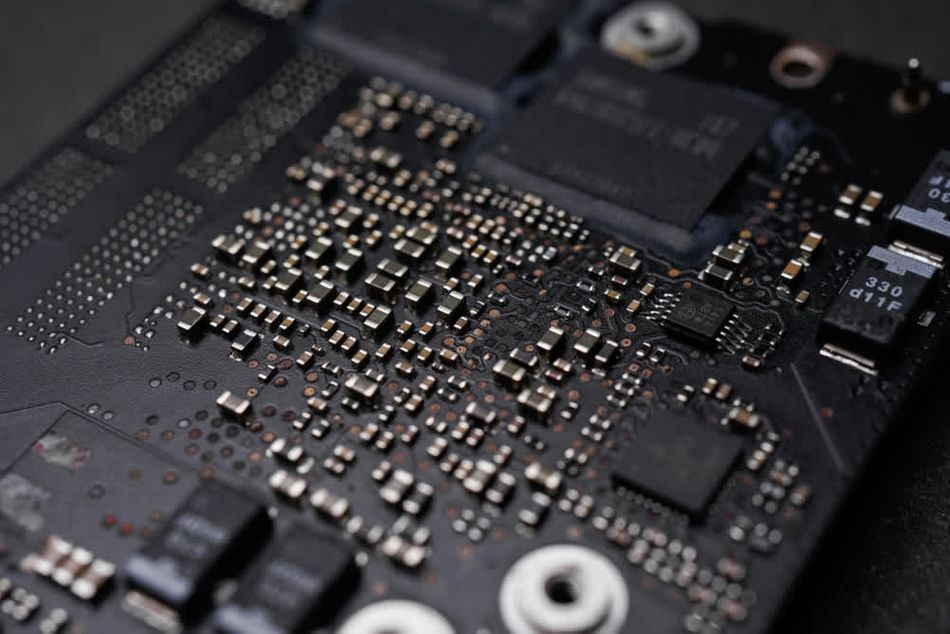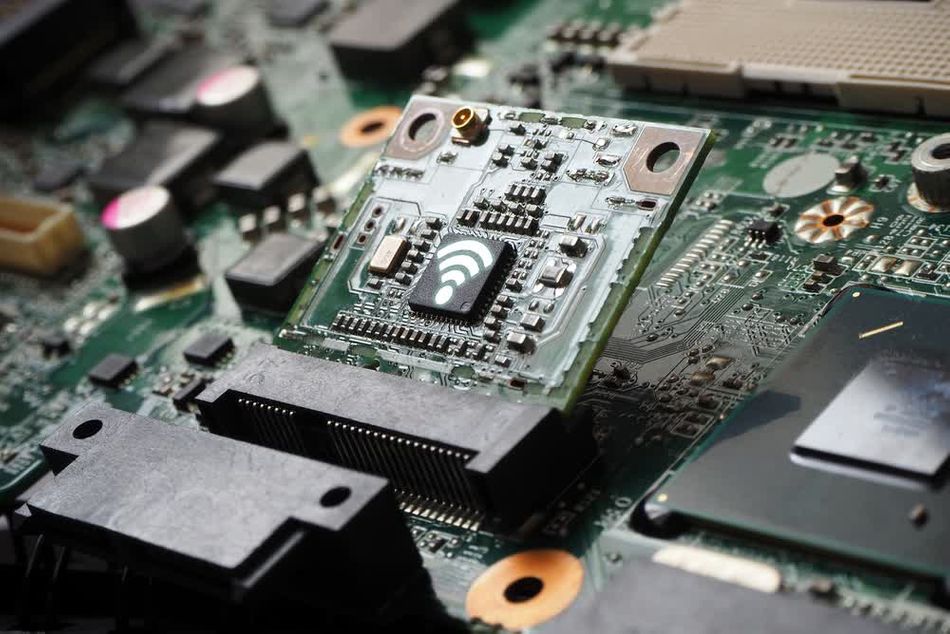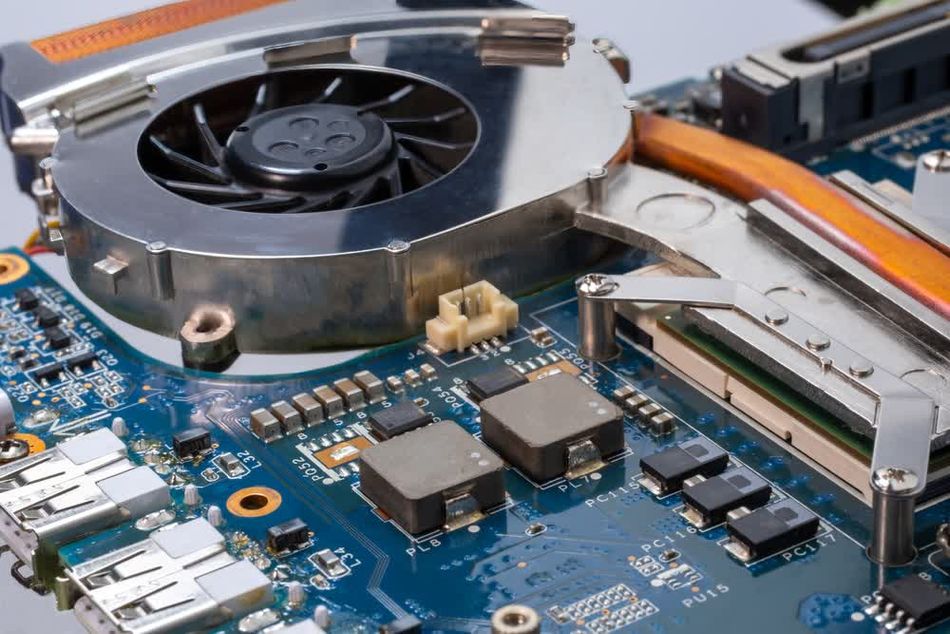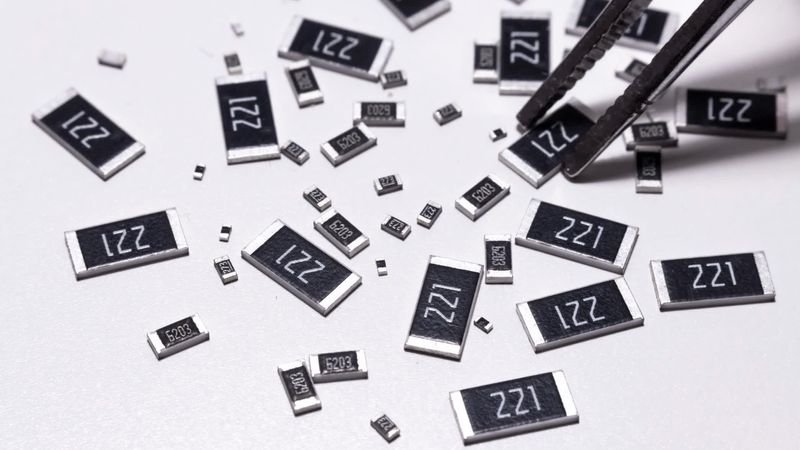SMD Resistor Sizes: A Comprehensive Guide for Engineers
Learn about the various sizes of SMD resistors, their impact on electronic circuit design, and the latest technological advancements in SMD Resistor Technology. This guide discusses practical insights for engineering professionals looking to optimize their designs with precise resistor sizes.
Introduction
Surface-Mount Device (SMD) resistors are critical components in modern electronic circuits, offering compactness and reliability. These resistors are integral to the design of high-density circuits, enabling the miniaturization of electronic devices. SMD Resistor sizes play a crucial role in circuit design, influencing impedance, heat dissipation, and overall performance.
Understanding the various SMD resistor sizes is essential for engineers aiming to optimize their designs for efficiency and functionality. Mastery of this knowledge enhances the precision of circuit design and drives innovation in creating more advanced and compact electronic systems.
The Basics of SMD Resistors
What Are SMD Resistors?
Surface-Mount Device (SMD) resistors are widely used in modern electronic assemblies due to their compact size and efficiency. These resistors are made to be used with Surface Mount Technology which differentiates them from traditional through-hole resistors having leads that pass through the PCB.
SMD resistors sit directly on the surface of the board. This design allows for automated placement and soldering, significantly speeding up the manufacturing process and reducing costs. In modern PCB design, SMD resistors are one of the most commonly used electronic components because of seamless mounting techniques.
Suggested Reading: SMT Assembly vs. Through-Hole: What to Know
SMD resistor development marked a significant evolution in electronic component design, driven by the need for miniaturization and improved performance in high-density circuits. Initially used in aerospace and military applications, SMD technology has become ubiquitous in consumer electronics, telecommunications, and automotive systems.
SMD Resistor Applications and Benefits
SMD resistors control current flow, set bias points, and divide voltages in electronic circuits. Their electrical properties, such as low parasitic inductance and capacitance, make them ideal for high-frequency applications.
Compared to through-hole resistors, SMD resistors offer superior performance in terms of thermal management and reliability, especially in compact and densely packed circuit designs.
The applications of SMD resistors are diverse including:
Design of smartphones, laptops, and other portable devices where space and weight are critical factors.
They are used in various control modules and sensor interfaces in the automotive industry to ensure reliable performance under harsh conditions.
Medical devices also benefit from SMD resistors due to their precision and stability.
SMD resistors help optimize space in a PCB design, so there are several benefits attached to them, such as:
Improved performance in high-frequency circuits
Reduced production costs due to automation compatibilityEnhanced reliability in challenging environments.

Their ability to be packed tightly into small spaces without sacrificing performance makes them indispensable in the ongoing trend toward miniaturization in electronic design.
Limitations of SMD Resistors Due to Their Size
While SMD resistors offer various advantages because of their miniature size, there are a few drawbacks too. These include:
They can be difficult to handle manually due to their small size.
Prototyping becomes more challenging and may involve robotic handling
Their power tolerance is less than that of through-hole resistors.
They are not suitable for high-power applications.
Importance of Resistor Sizes in Electronics
The size of resistors in electronic design is crucial for performance and reliability. It impacts several key parameters, making so it’s critical to choose the appropriate size for specific applications.
Technical Impacts of Resistor Size
Impedance - Smaller resistors have lower parasitic inductance and capacitance, crucial for high-frequency applications, ensuring minimal signal distortion.
Inductance - Physical dimensions affect inductive properties. Smaller resistors have lower inductance, suitable for high-speed circuits with critical signal integrity.
Thermal Resistance - Resistor size affects heat dissipation. Larger resistors can dissipate more heat, preventing overheating and ensuring reliability in power applications.
Impact of SMD Resistor Size on PCB Design
Since SMD resistors are mounted on a PCB, their size directly impacts PCB design. Here are some critical aspects where PCB design is influenced by SMD resistor size.
Circuit Compactness - Smaller SMD resistor sizes (e.g., 0201, 0402) allow for higher component density, enabling more compact PCB designs. This is particularly beneficial in applications where space is limited, such as mobile devices and wearables.
Trace Routing - Smaller SMD resistors free up more space for routing traces, making it easier to design complex circuits.
Noise - The noise performance can vary with resistor size and type. Thin film resistors generally perform better noise, which might be preferred in precision analog circuits.
Mechanical Robustness - Larger resistors tend to be more mechanically robust. Smaller resistors are more susceptible to damage during handling and soldering.
Component Cost - There might be slight cost differences between different sizes, but these are generally minor compared to the overall impact on PCB design and assembly.
Common SMD Resistor Sizes
The dimensions and sizes of surface mount resistors follow standardized guidelines, with most manufacturers adhering to EIA/JEDEC standards. These resistors are identified by a numerical code that specifies their size, such as 0603. This code represents the length and width of the resistor's package, where the imperial code 0603 denotes a length of 0.060 inches and a width of 0.030 inches.
Code | Length (l) | Width (w) | Height (h) | Power | ||||
Imperial | Metric | inch | mm | inch | mm | inch | mm | Watt |
0201 | 0603 | 0.024 | 0.6 | 0.012 | 0.3 | 0.01 | 0.25 | 1/20 (0.05) |
0402 | 1005 | 0.04 | 1.0 | 0.02 | 0.5 | 0.014 | 0.35 | 1/16 (0.062) |
0603 | 1608 | 0.06 | 1.55 | 0.03 | 0.85 | 0.018 | 0.45 | 1/10 (0.10) |
0805 | 2012 | 0.08 | 2.0 | 0.05 | 1.2 | 0.018 | 0.45 | 1/8 (0.125) |
1206 | 3216 | 0.12 | 3.2 | 0.06 | 1.6 | 0.022 | 0.55 | 1/4 (0.25) |
1210 | 3225 | 0.12 | 3.2 | 0.10 | 2.5 | 0.022 | 0.55 | 1/2 (0.50) |
1812 | 3246 | 0.12 | 3.2 | 0.18 | 4.6 | 0.022 | 0.55 | 1 |
2010 | 5025 | 0.20 | 5.0 | 0.10 | 2.5 | 0.024 | 0.6 | 3/4 (0.75) |
2512 | 6332 | 0.25 | 6.3 | 0.12 | 3.2 | 0.024 | 0.6 | 1 |
Technological Advancements in SMD Resistors
Recent Innovations in SMD Resistors
Recent years have seen significant technological advancements in the manufacturing of Surface-Mount Device (SMD) resistors. Primarily, these advancements are driven by the industry's demand for more compact, reliable, and high-performance components suitable for modern electronic applications. Historically, the push towards miniaturization and enhanced performance began in the aerospace and military sectors, which required robust and precise components.
Use of Advanced Materials
The use of advanced materials such as high-stability metal films and ceramics is one of the key developments in SMD resistor technology. The idea is to enhance the performance and reliability of SMD resistors.
These materials offer better resistance stability over a wide range of temperatures and operating conditions. For example, thin-film materials significantly reduce the temperature coefficient of resistance (TCR), allowing for more accurate performance in temperature-sensitive applications.
Improved Manufacturing Processes
Improvements in manufacturing processes have also played a crucial role. Enhanced fabrication techniques, such as laser trimming and thin-film deposition, allow for more precise control over resistance values and tighter tolerance levels. These techniques ultimately contribute to optimized SMD resistor sizes to promote PCB miniaturization.
Moreover, these advancements have led to resistors with improved resistance tolerance, lower TCR, and higher power ratings, making them suitable for a broader range of applications. For instance, laser trimming enables manufacturers to achieve precise resistance values by selectively removing material from the resistor element, ensuring tight tolerances and consistent performance.
Enhanced Performance Metrics
Recent advancements in SMD resistor technology have significantly improved key performance metrics such as resistance tolerance, temperature coefficient, and power rating.
- Resistance Tolerance - Achieving tight resistance tolerance was always challenging due to limitations in manufacturing precision. Traditional SMD resistors typically offered resistance tolerances of ±1% to ±5%. However, modern advancements in thin-film technology and laser trimming have enabled manufacturers to produce resistors with much tighter tolerances.
- Temperature Coefficient of Resistance (TCR) - Lower TCR values indicate greater stability across temperature variations. Traditional SMD resistors had TCR values ranging from ±100 ppm/°C to ±200 ppm/°C. With the introduction of new materials and refined manufacturing techniques, modern resistors now achieve TCR values as low as ±10 ppm/°C. This improvement enhances the reliability and performance of resistors in environments with fluctuating temperatures, such as automotive and aerospace applications, where consistent performance is critical despite environmental changes.
- Power Rating - Traditional SMD resistors typically had power ratings between 0.125W and 0.25W. On the other hand, modern SMD resistors now offer power ratings up to 0.5W or higher. This increase allows resistors to handle more power without failure, making them suitable for high-power applications in industrial and consumer electronics. For instance, in power supply circuits and motor controllers, higher power ratings are essential to ensure reliability and prevent overheating.
Suggested Reading: Power Management for Tomorrows Innovations
Comparison of Traditional and Modern SMD Resistors
The table below illustrates the improvements in performance metrics for traditional versus modern SMD resistors:
Metric | Traditional SMD Resistors | Modern SMD Resistors |
Resistance Tolerance | ±1% to ±5% | ±0.1% |
TCR | ±100 ppm/°C to ±200 ppm/°C | ±10 ppm/°C to ±25 ppm/°C |
Power Rating | 0.125W to 0.25W | 0.5W and higher |
These advancements not only improve the performance and reliability of SMD resistors but also expand their application range, enabling engineers to design more efficient and robust electronic systems.
Practical Applications of Advanced SMD Resistors
Optimizing Circuit Design with SMD Resistors
Advancements in SMD resistor technology allow engineers to optimize circuit designs for better performance, reliability, and efficiency. These resistors are essential in various fields, offering precise resistance values, improved thermal management, and greater power handling capabilities.
Automotive Industry
Engine Control Units (ECUs) - Modern ECUs require precise control over engine parameters. Advanced SMD resistors with tight resistance tolerances and low TCR ensure accurate sensor readings and stable performance across varying temperatures.
Example: Vishay Dale CRCW-IF series with ±0.1% tolerance and ±15 ppm/°C TCR.
Infotainment Systems - High-performance audio and video systems in vehicles benefit from SMD resistors that offer low noise and high stability.
Example: Panasonic ERJ series resistors for signal conditioning with power ratings up to 0.5W.
Telecommunication
Base Stations -Telecommunication base stations require components that handle high power and maintain stability. Advanced SMD resistors with high power ratings are essential in these applications.
Example: High-power SMD resistors from the Ohmite LVK series, supporting up to 1W power rating.
Networking Equipment - Routers and switches utilize SMD resistors for signal integrity and noise reduction.
Example: TE Connectivity RN73 series resistors with tight tolerance and low TCR for reliable network performance.

Consumer Electronics
Smartphones -The compact design of smartphones relies heavily on SMD resistors for space-saving and efficient power management.
Example: Samsung RC series with compact sizes and high reliability for power regulation circuits.
Wearable Devices - Wearables require miniature components that offer precision and durability. SMD resistors are critical in these compact designs.
Example: Yageo RC0402 series, featuring small dimensions and high precision, ideal for fitness trackers and smartwatches.
Challenges and Considerations with SMD Resistor Sizes
Engineers often face several technical challenges when working with SMD resistor sizes. Addressing these challenges effectively is crucial for ensuring the reliability and performance of electronic devices.
Placement Accuracy
Achieving precise placement of SMD resistors on printed circuit boards (PCBs) is critical. Accurate placement ensures electrical connectivity and prevents short circuits. Manual placement was prone to errors, but modern automated pick-and-place machines have greatly improved accuracy.
Solution - Utilize high-precision pick-and-place machines and ensure proper calibration. Implement quality control checks to verify correct component orientation and placement.
Best Practice - Use fiducial markers on PCBs to guide placement machines and enhance accuracy.
Thermal Management
Managing heat dissipation in high-power applications is essential to maintain the performance and longevity of SMD resistors. Previously, inadequate thermal management led to component failures and reduced lifespan. Today, advanced materials and design strategies improve heat dissipation.
Solution - Design PCBs with adequate thermal reliefs and use materials with high thermal conductivity. Employ thermal vias and copper pours to enhance heat dissipation.
Best Practice - Conduct thermal simulations during the design phase to identify potential hotspots and optimize the thermal management strategy.

Solder Joint Reliability
Reliable solder joints are vital for the durability of SMD resistors. Poor solder joints can lead to mechanical failure and electrical disconnection. Advances in solder paste composition and reflow profiles have enhanced joint reliability.
Solution - Select high-quality solder paste and optimize the reflow soldering process. Use appropriate pad designs to ensure robust solder joints.
Best Practice - Implement inspection techniques such as X-ray and automated optical inspection (AOI) to detect solder joint defects.
Suggested Reading: Types of Solder: A Comprehensive Guide for Engineering Professionals
Minimizing Parasitic Effects
Parasitic inductance and capacitance can affect the performance of SMD resistors, especially in high-frequency applications.
Solution - Design with shorter and wider traces to reduce inductance and use appropriate grounding techniques. Carefully select resistor placement to minimize coupling effects.
Best Practice - Perform electromagnetic compatibility (EMC) testing to identify and mitigate parasitic effects during the design phase.
Quality and Reliability Issues
Quality and reliability are critical considerations when selecting SMD resistors for electronic designs. These components must perform consistently under various conditions to ensure the longevity and reliability of the entire system.
Failure Modes and Lifespan
SMD resistors are generally effective, but they can fail due to several reasons including:
Thermal Stress - high temperature causes degradation in performance eventually leading to failure.
Mechanical Stress - Excessive vibration and impacts can cause cracking and detachment of resistors from the PCB
Environmental Factors - Humidity and corrosion lead to oxidation which reduces the performance and lifespan of SMD resistors.
Testing and Validation Methods
To ensure the reliability of SMD resistors, rigorous testing and validation are essential. Various methods are employed to assess the quality and performance of these components:
Temperature Cycling - Exposes resistors to extreme temperature variations to test their stability and performance under thermal stress.
Humidity Testing - Subjects resistors to high humidity environments to evaluate their resistance to moisture and potential for corrosion.
Vibration Testing - Simulates the mechanical stress caused by vibrations to check the structural integrity of the resistors.
Electrical Testing - Measures the electrical characteristics, including resistance, tolerance, and TCR, to ensure they meet specified requirements.
Suggested Reading: Electrical Testing: Comprehensive Guide for Engineering Professionals
Quality Assurance Techniques
Quality assurance for SMD resistors involves several techniques and standards to guarantee their performance and reliability:
Automated Optical Inspection (AOI) - Uses cameras and scanners to inspect the solder joints and placement of resistors on the PCB, ensuring correct installation and detecting defects.
X-ray Inspection - Provides a detailed internal view of the solder joints and resistor placement, identifying hidden defects and verifying the integrity of the connections.
Burn-in Testing - Involves operating resistors at elevated temperatures and voltages for an extended period to identify early failures and ensure long-term reliability.
Statistical Process Control (SPC) - Monitors the manufacturing process through statistical methods to maintain consistent quality and identify variations that could affect performance.
Technique | Details |
Automated Optical Inspection | Inspects solder joints and placement with cameras to ensure correct installation and detect defects. |
X-ray Inspection | Provides detailed internal views of solder joints, identifying hidden defects and verifying integrity. |
Burn-in Testing | Operates resistors at high temperatures and voltages to identify early failures. |
Statistical Process Control | Uses statistical methods to monitor manufacturing and maintain consistent quality. |
Conclusion
Throughout this article, we have explored the significance of SMD resistor sizes, understanding their impact on electronic circuit design, recent technological advancements, and practical applications across various industries. By leveraging these advancements, engineers can optimize circuit designs for improved performance, reliability, and efficiency.
The importance of selecting the appropriate SMD resistor size cannot be overstated, as it directly influences the success of electronic devices in high-frequency, power-sensitive, and compact environments. Mastery of SMD resistor sizes equips engineers with the knowledge to innovate and excel in the ever-evolving field of electronics.
Frequently Asked Questions (FAQs)
Q1. Why is the size of an SMD resistor important?
The size of an SMD resistor affects its electrical performance, including resistance, inductance, and thermal management. Smaller sizes are suitable for high-frequency applications due to lower parasitic inductance, while larger sizes can handle higher power dissipation.
Q2. How does the temperature coefficient of resistance (TCR) impact SMD resistors?
The TCR indicates how the resistance value of an SMD resistor changes with temperature. A lower TCR means the resistor is more stable across temperature variations, which is crucial for applications requiring high precision and reliability.
Q3. What are the typical failure modes of SMD resistors?
Typical failure modes include thermal stress, mechanical stress, and environmental factors such as humidity and corrosion. These can lead to degradation of the resistive material, cracking, detachment from the PCB, or oxidation and corrosion.
Q4. What are some common testing methods for ensuring the reliability of SMD resistors?
Common testing methods include temperature cycling, humidity testing, vibration testing, and electrical testing. These tests evaluate the stability, performance, and structural integrity of SMD resistors under various conditions.
Q5. How can engineers minimize parasitic effects in SMD resistor designs?
Engineers can minimize parasitic effects by designing with shorter and wider traces, using appropriate grounding techniques, and carefully selecting the placement of resistors to reduce inductance and coupling effects.
Q6. What advancements have been made in SMD resistor technology?
Recent advancements include the use of high-stability metal films and ceramics, improved fabrication techniques like laser trimming and thin-film deposition, and enhanced performance metrics such as tighter resistance tolerances, lower TCR, and higher power ratings.
References
Table of Contents
IntroductionThe Basics of SMD ResistorsWhat Are SMD Resistors?SMD Resistor Applications and BenefitsLimitations of SMD Resistors Due to Their SizeImportance of Resistor Sizes in ElectronicsTechnical Impacts of Resistor SizeImpact of SMD Resistor Size on PCB DesignCommon SMD Resistor SizesTechnological Advancements in SMD Resistors Recent Innovations in SMD ResistorsUse of Advanced MaterialsImproved Manufacturing ProcessesEnhanced Performance MetricsComparison of Traditional and Modern SMD ResistorsPractical Applications of Advanced SMD ResistorsOptimizing Circuit Design with SMD ResistorsChallenges and Considerations with SMD Resistor SizesPlacement Accuracy Thermal Management Solder Joint Reliability Minimizing Parasitic Effects Quality and Reliability IssuesFailure Modes and LifespanTesting and Validation MethodsQuality Assurance TechniquesConclusionFrequently Asked Questions (FAQs)Q1. Why is the size of an SMD resistor important? Q2. How does the temperature coefficient of resistance (TCR) impact SMD resistors? Q3. What are the typical failure modes of SMD resistors? Q4. What are some common testing methods for ensuring the reliability of SMD resistors? Q5. How can engineers minimize parasitic effects in SMD resistor designs? Q6. What advancements have been made in SMD resistor technology? References
